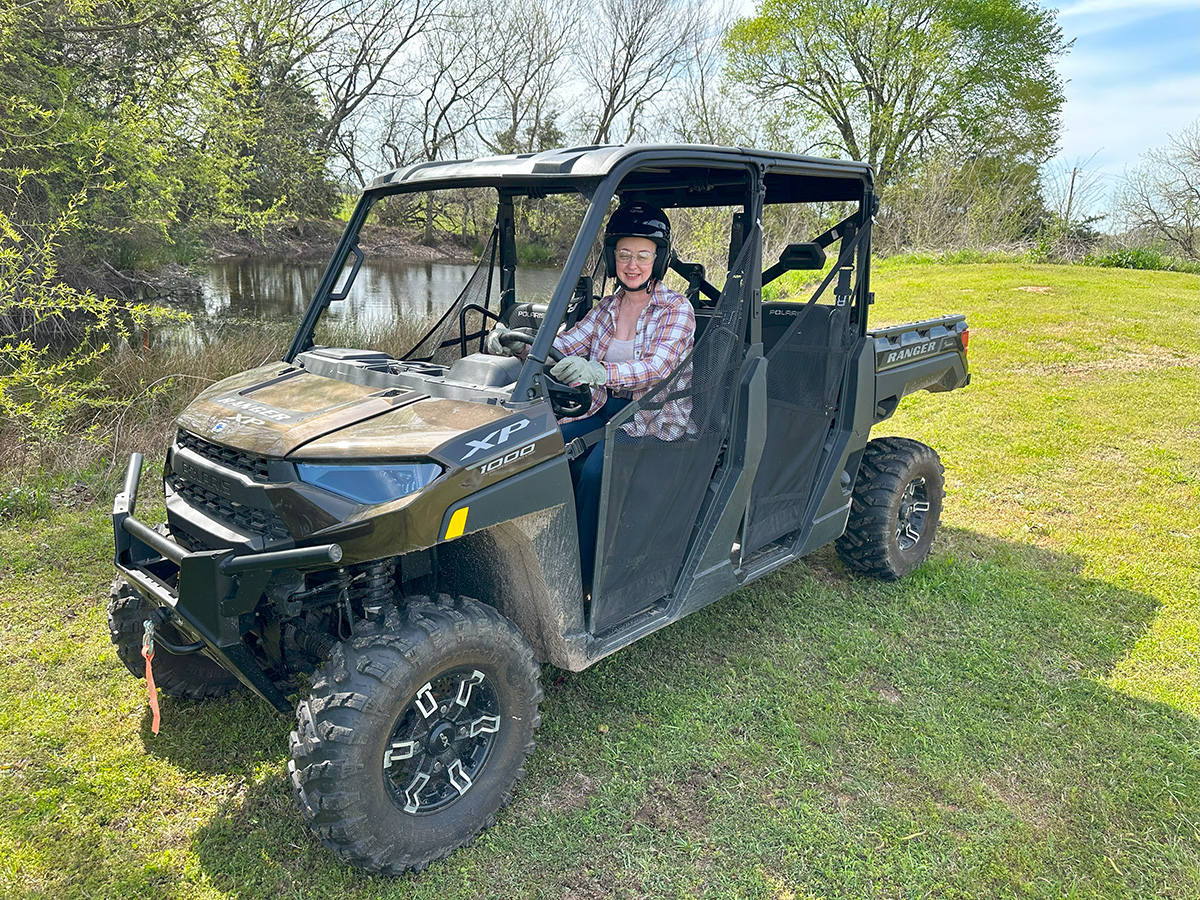ATVs and Off-Road Vehicles Are a Ton of Fun. And Dangerous. These Are Our Safety Musts
ATV riding and off-road adventures are fun, but also, dangerous. But with the right precautions and gear, everyone can be safe and have fun out on the trail.

Read This Before You Go Mudding on Your ATV.
My good friend got the call no parent wants to get: her teenage daughter was injured while riding on an ATV with friends. The driver hit a ditch going too fast and the ATV flipped. Everyone was able to jump off except her daughter, whose leg was pinned.
Luckily, the mishap only resulted in a bad scar. It could have been much worse, and if the girl had been aware of the proper safety protocols, she might have avoided injury altogether.
All-terrain vehicles, or ATVs, and off-road vehicles, or ORVs, can be a blast, especially for young people or anyone with acres of open land to explore. And while they can be dangerous, the good news is that with the right precautions we can protect ourselves and our loved ones and most accidents can be avoided. Here are some ATV and ORV safety tips for a safe ride.
Related: Side-by-Side Off-Roading Fun and Family Adventure in a Honda Talon 1000R-4

Helmets are a must in an ATV. Photo Erica Mueller
Who Should Drive an ORV or ATV?
One of the biggest mistakes I see in ATV and ORV safety is letting small children operate machinery that is big enough to squash them. Keep in mind, these vehicles weigh hundreds, sometimes thousands of pounds, and have enough horsepower to go great speeds, pull other vehicles out of the mud, and carry up to 6 people plus cargo. These aren’t toys, they’re tools. And just like you wouldn’t hand your child a power saw capable of severing a limb, you shouldn’t hand them keys to a piece of machinery.
While there is no magic age limit, you will need to consider your child’s size. Can they properly reach all the pedals while their back is against the seat and while wearing their seat belt? Can they operate the gear selector? Next, are they mature enough to understand the dangers and the power of the machine? You can even set rules that younger drivers can only operate the vehicle in low gear to avoid high speeds.
Related: Life on Three Wheels: My Journey in the Polaris Slingshot

ATV and Polaris Ranger safety includes a pair of boots. Photo: Erica Mueller
Who Should Ride in an Off-Road Vehicle?
According to manufacturers’ safety tips, passengers shouldn’t be in the vehicle until they can sit on the seat as it is designed and their feet can rest flat on the floor. Of course, there are no laws that state this, and ATVs and ORVs are normally used on private property anyway, but it’s a good rule of thumb to follow, especially when you’re thinking about teens driving and who should be in or on the vehicle with them.
Related: ATV Curious? Learn to Ride with Can-Am

Having fun in the Polaris Ranger. Photo: Erica Mueller
Buckle Up. Every Time.
A lot of ATVs don’t have seat belts, for good reason. They don’t have roll cages, and you need to have a chance of jumping off or rolling out from under before one lands on you. But larger side-by-sides often have seatbelts, just like a car. And they are meant to be used. These vehicles can reach pretty high speeds, and passengers are usually passively sitting versus holding onto handlebars while driving, so seatbelts help to protect against sudden jolts and unexpected turns. And it should go without saying that the bed of an ORV is not a seat.

The doors on the Polaris Ranger are part of good ATV safety. Photo: Erica Mueller
Have Doors? Close Them.
We get it; you like taking your Jeep out without the doors, but most side-by-sides have some kind of doors, even if they are just mesh. Use them. You’ll still get that open-air experience, but you’ll be protected from branches, arms, and legs, more likely to remain safe in the vehicle, and less likely to lose your belongings to the great outdoors.
ATV and ORV Safety Gear
You don’t have to suit up like an astronaut in a space before you hit the trail, but there are a couple of fit checks to consider as you prepare for your adventure.
Number one: Helmets are a must. You might not think you need one, but you do. One strong jolt can send you flying, and your head could hit a rock, a building, or a tree. Put the helmet on. Every passenger should be wearing a helmet.
Number two: Protective gear. While you’re not on two wheels and worried as much about road rash the way you would on a motorcycle or dirtbike, there are plenty of opportunities for contact with brush and branches, and should a flip occur, you’ll be glad you were protected. So, wear over-the-ankle boots, long pants, long-sleeved shirts and gloves. Eye protection is also a good idea if your helmet doesn’t provide it. Ear protection should also be worn for long rides; extended exposure to wind and engine noise can affect hearing.
Know Your ORV or ATV
Does your ORV or ATV have a kill switch? Perhaps there is a regulator that assures the vehicle won’t exceed a set speed unless all passengers are belted. Make sure all storage compartments, dump beds, and belongings are fully secured before driving. Then have fun. Safely!
Have a thought or comment? Share it with us on social media! You can find us on Instagram, Facebook, Twitter and LinkedIn. And be sure to sign up for our email newsletter!
